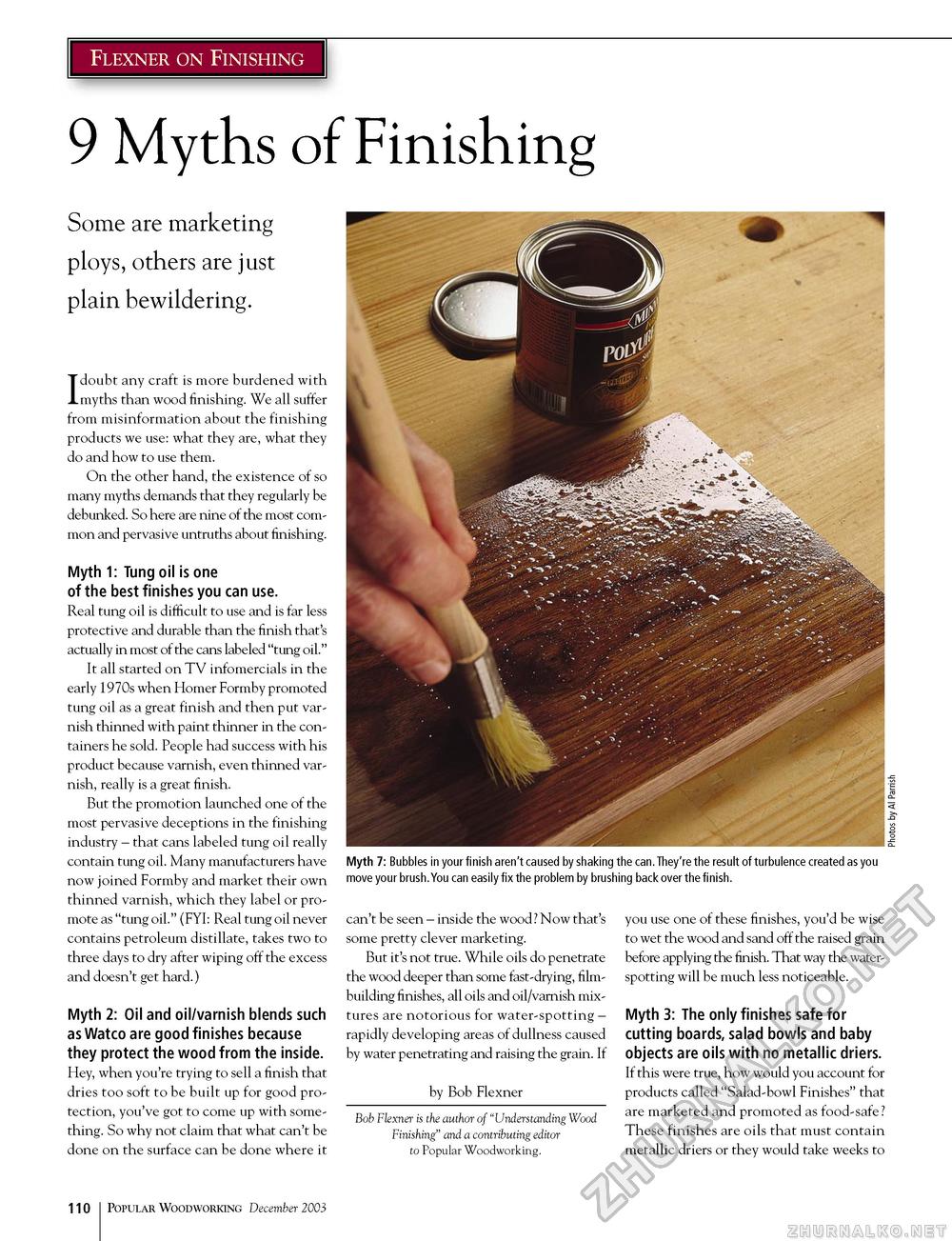Popular Woodworking 2003-12 № 138, страница 109
Flexner on Finishing 9 Myths of Finishing Some are marketing ploys, others are just plain bewildering. I doubt any craft is more burdened with myths than wood finishing. We all suffer from misinformation about the finishing products we use: what they are, what they do and how to use them. On the other hand, the existence of so many myths demands that they regularly be debunked. So here are nine of the most common and pervasive untruths about finishing. Myth 1: Tung oil is one of the best finishes you can use. Real tung oil is difficult to use and is far less protective and durable than the finish that's actually in most of the cans labeled "tung oil." It all started on TV infomercials in the early 1970s when Homer Formby promoted tung oil as a great finish and then put varnish thinned with paint thinner in the containers he sold. People had success with his product because varnish, even thinned varnish, really is a great finish. But the promotion launched one of the most pervasive deceptions in the finishing industry - that cans labeled tung oil really contain tung oil. Many manufacturers have now joined Formby and market their own thinned varnish, which they label or promote as "tung oil." (FYI: Real tung oil never contains petroleum distillate, takes two to three days to dry after wiping off the excess and doesn't get hard.) Myth 2: Oil and oil/varnish blends such as Watco are good finishes because they protect the wood from the inside. Hey, when you're trying to sell a finish that dries too soft to be built up for good protection, you've got to come up with something. So why not claim that what can't be done on the surface can be done where it Myth 7: Bubbles in your finish aren't caused by shaking the can.They're the result of turbulence created as you move your brush.You can easily fix the problem by brushing back over the finish. can't be seen - inside the wood? Now that's some pretty clever marketing. But it's not true. While oils do penetrate the wood deeper than some fast-drying, film-building finishes, all oils and oil/varnish mixtures are notorious for water-spotting -rapidly developing areas of dullness caused by water penetrating and raising the grain. If by Bob Flexner Bob Flexner is the author of "Understanding Wood Finishing" and a contributing editor to Popular Woodworking. you use one of these finishes, you'd be wise to wet the wood and sand off the raised grain before applying the finish. That way the water-spotting will be much less noticeable. Myth 3: The only finishes safe for cutting boards, salad bowls and baby objects are oils with no metallic driers. If this were true, how would you account for products called "Salad-bowl Finishes" that are marketed and promoted as food-safe? These finishes are oils that must contain metallic driers or they would take weeks to 110 Popular Woodworking December 2003 |








